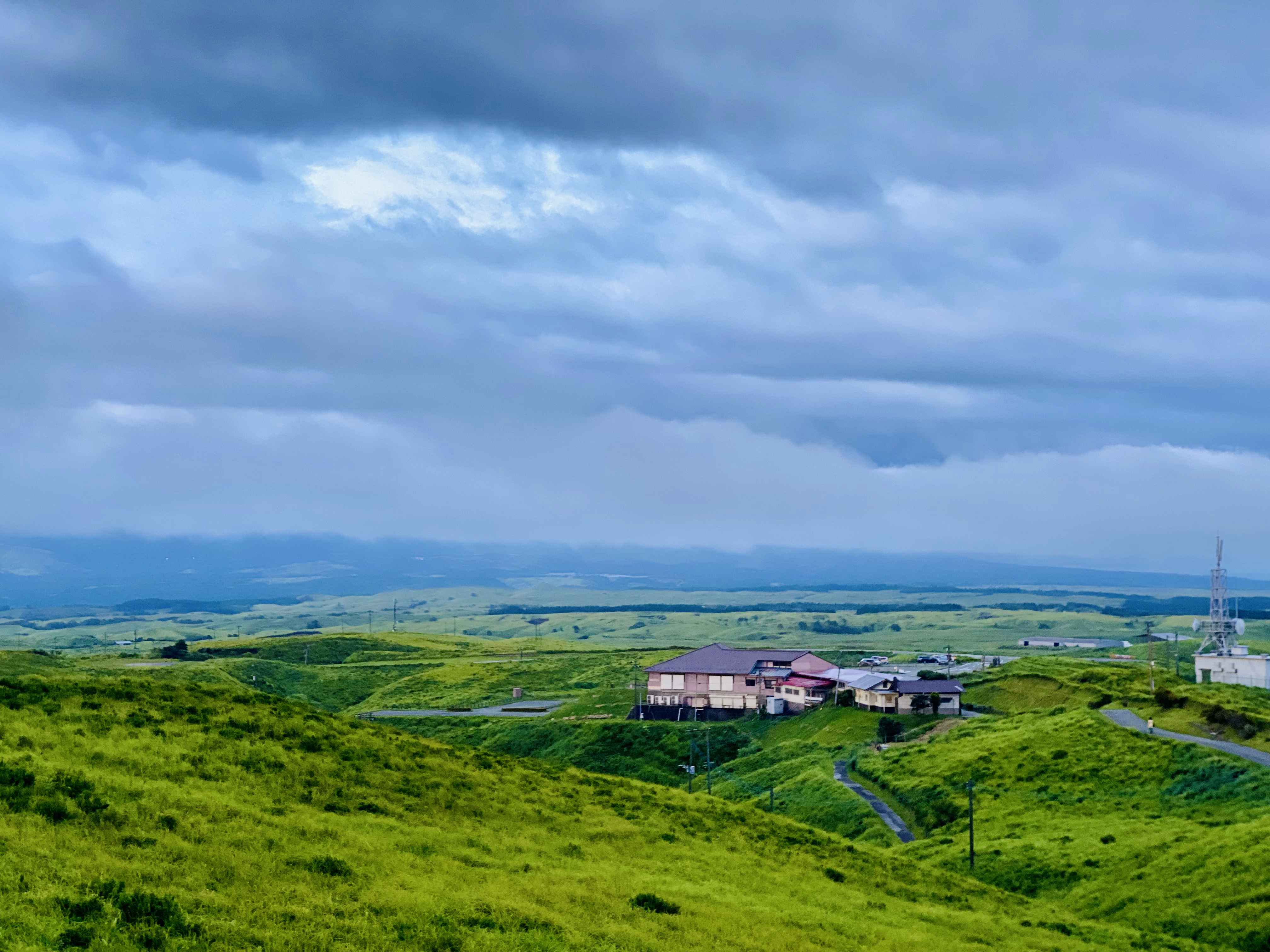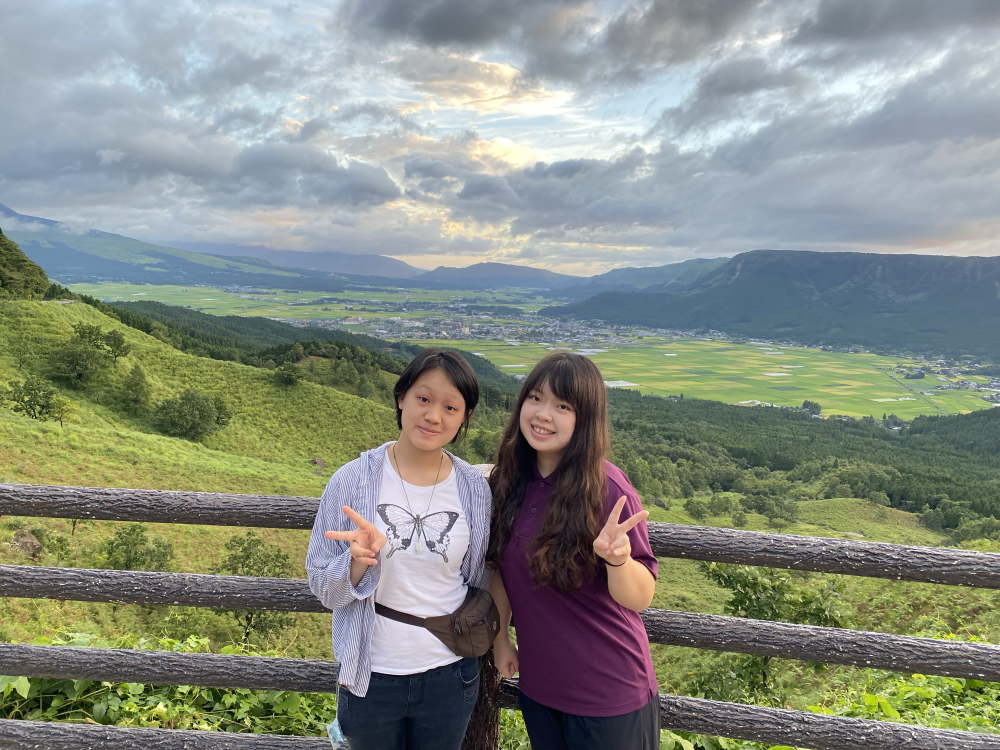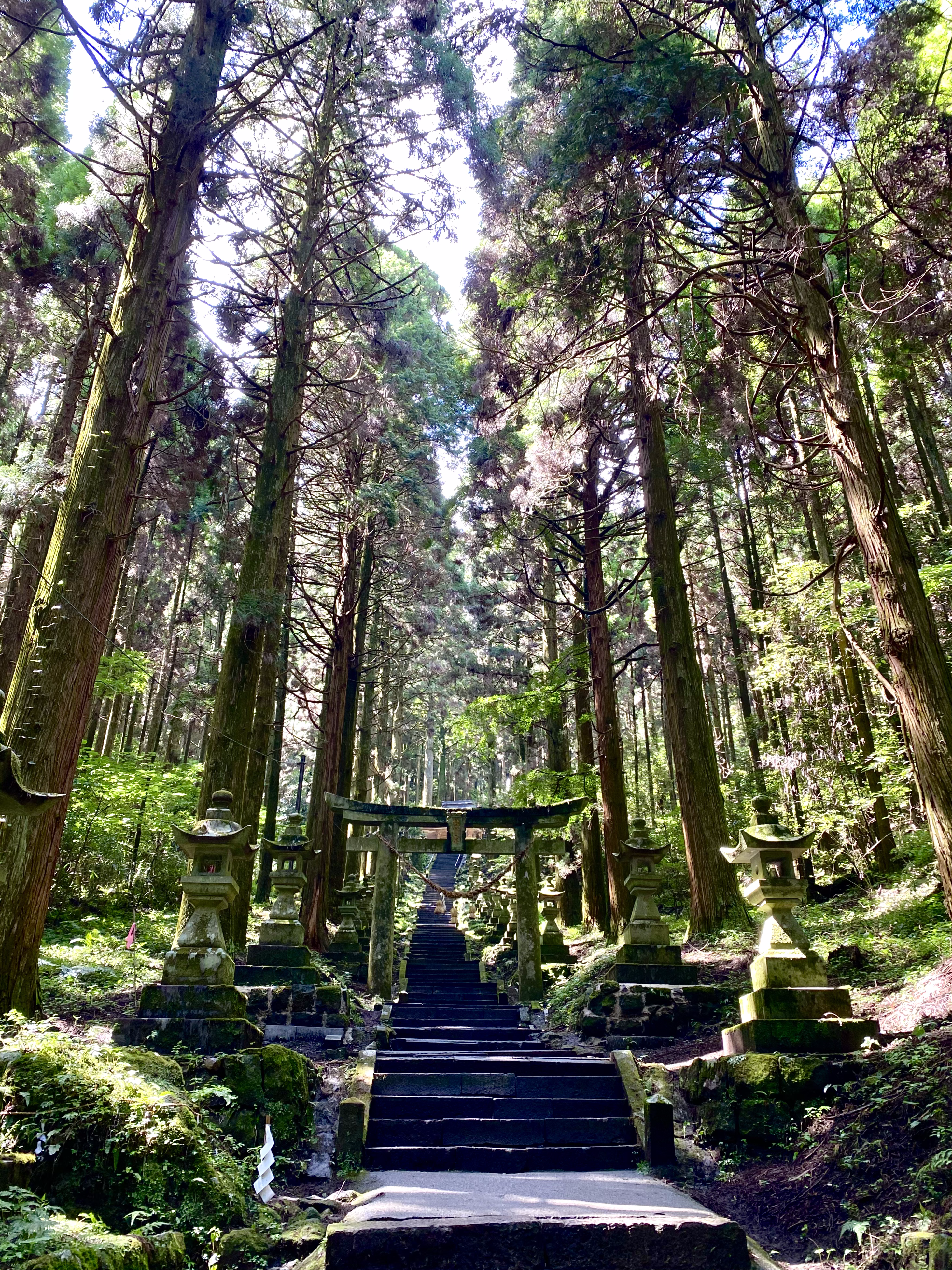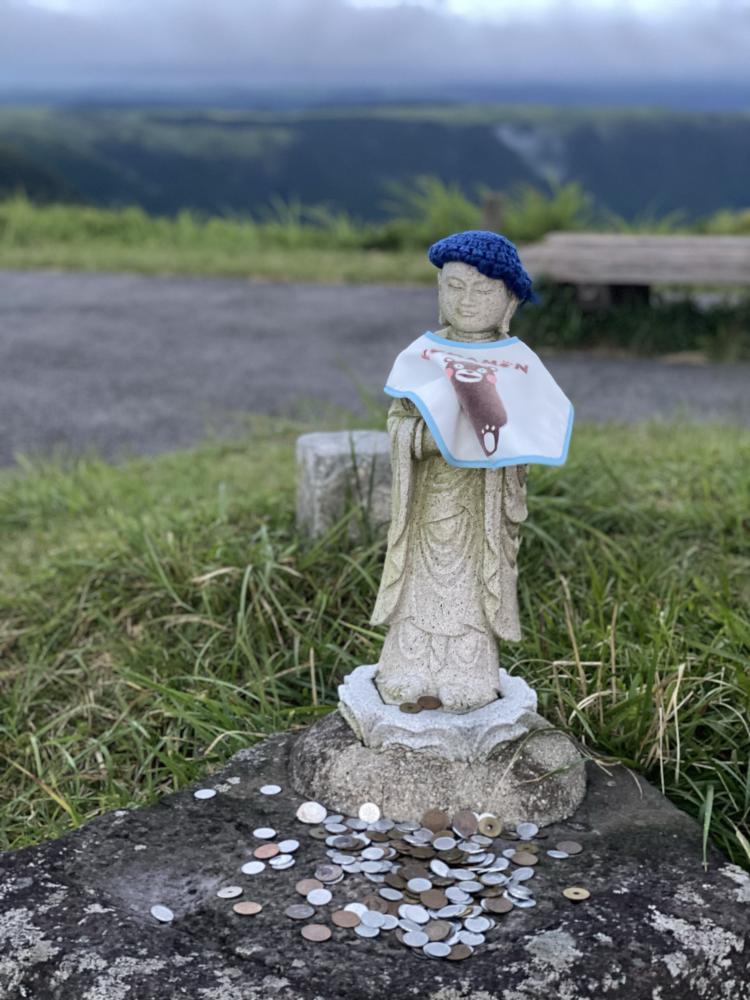Hello~ We are Minze and Totoro!
哈囉大家好~ 我們是小之和于媗!
Today we want to introduce Kamishikimi Kumanoimasu Shrine and Daikanbo to you~
Kamishikimi Kumanoimasu Shrine
Totoro:
This shrine gained fame as the setting for the anime film “Into the Forest of Fireflies’ Light.” Standing in front of the torii gate, I can’t help but recall the memory of the story. When Hotaru Takegawa and Gin first met on the summer day, the tender moments of them protecting and accompanying each other, and the bittersweet emotion of their final embrace and the cruel twist of fate.
We visited the site before the typhoon made landfall. It was an overcast day with light rain. As we climbed the stone steps and walked through the forest, we were surrounded by moss-covered stone lanterns, creating a mysterious atmosphere under the damp air.
Where is the destination? Where do these stone steps lead? With these questions and a sense of curiosity, we continued to explore deeper.
At the point where the shrine came into view, a second torii gate appeared, covered in moss and tied with a shimenawa rope, just like the first one. It felt as though we were passing into the realm of the gods. Here, whether using a phone or camera, you can capture postcard-worthy photos, filled with beauty that is both sacred and moving.
The weather cleared up as we descended, with sunlight breaking through. The contrast of light and shadow is now visible. After we making a wish at the shrine by shaking the bell. The change from cloudy to sunny felt like a sign of hope arriving.
As I bathed in the post-rain, sunlit forest, I secretly wished to write an alternate ending for “Into the Forest of Fireflies’ Light” : In the next summer, Gin returns to the human world and reunites with Hotaru Takegawa. This time, he is no longer bound by any spells and embrace her openly.
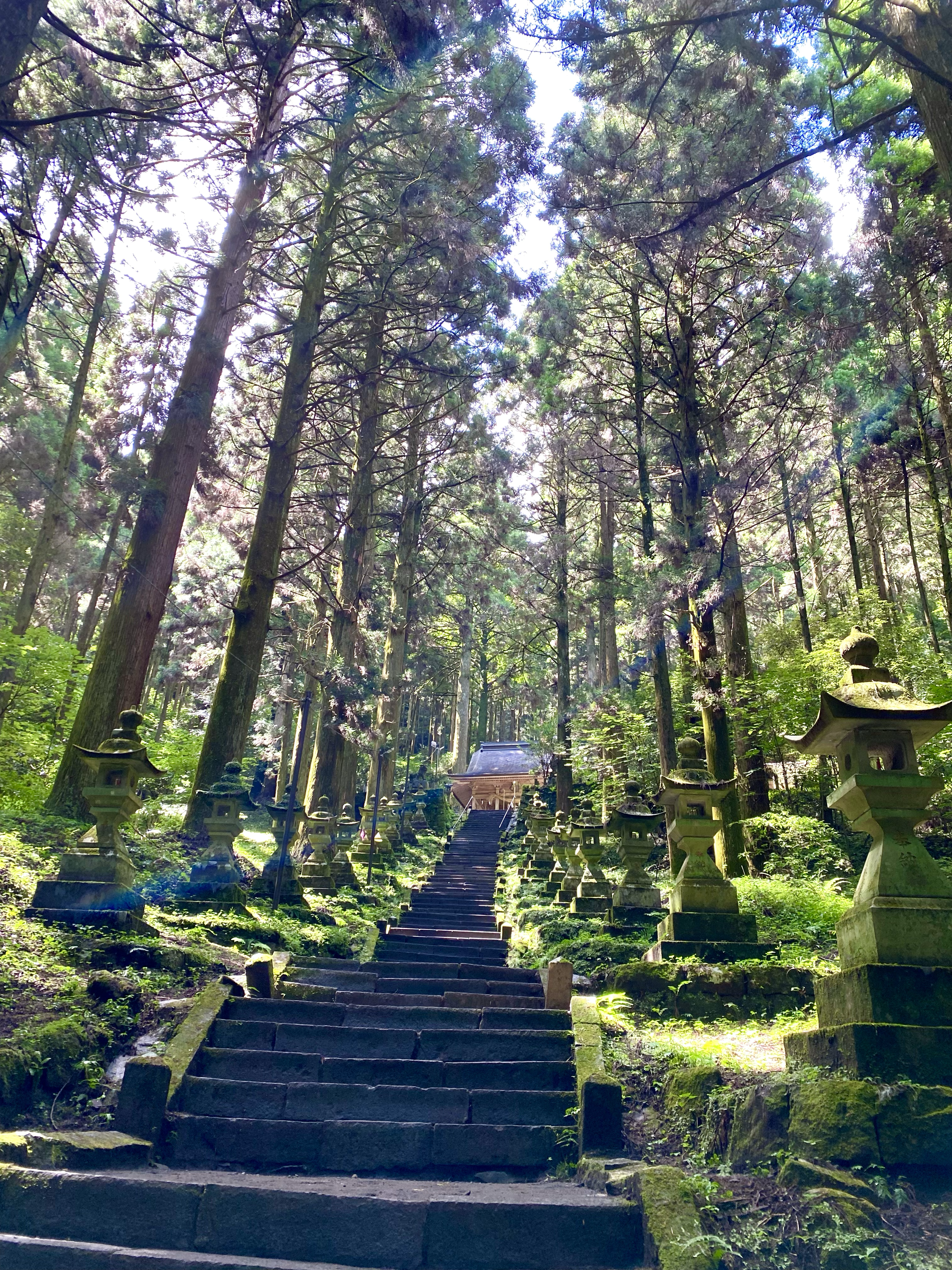
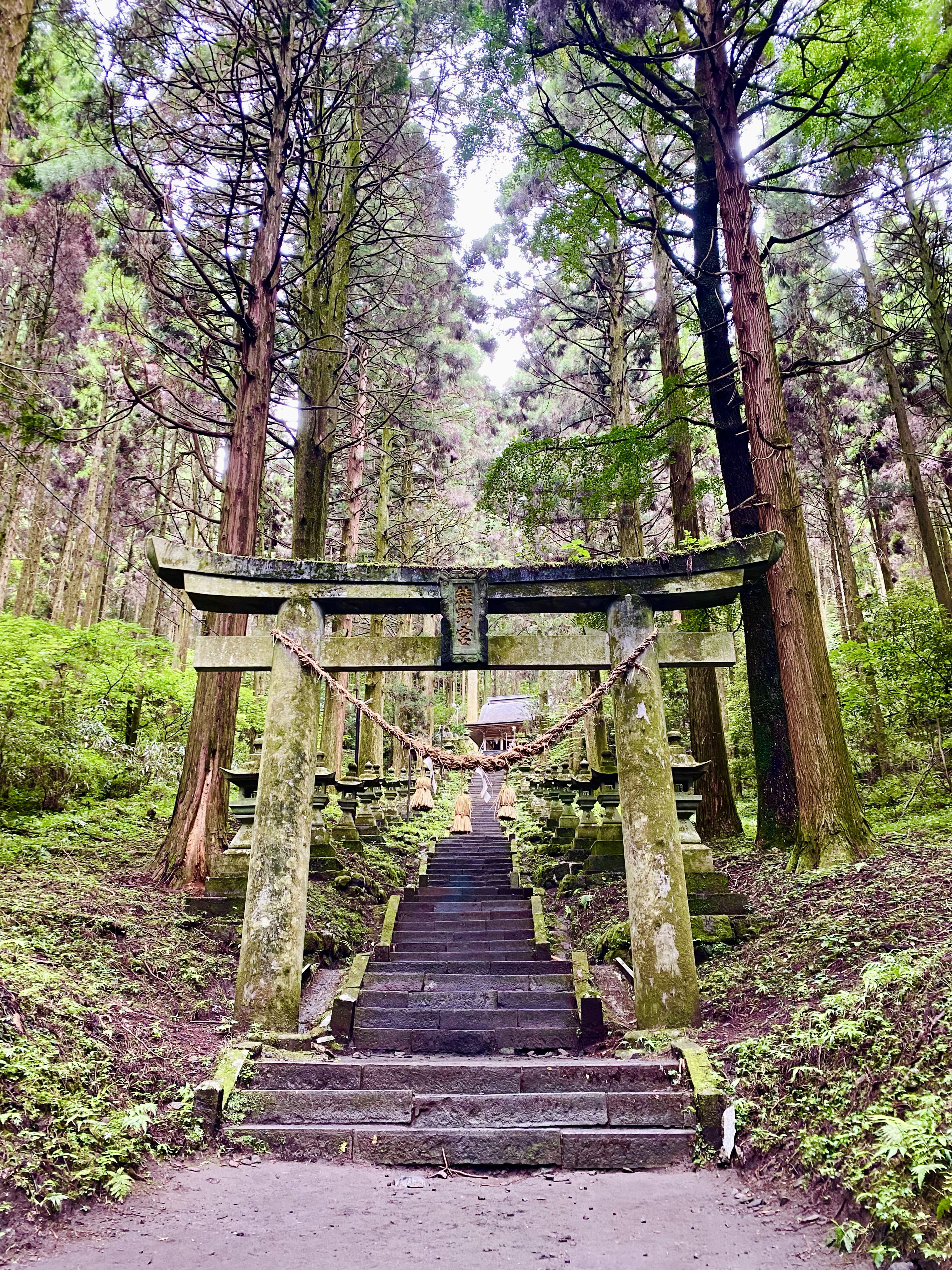
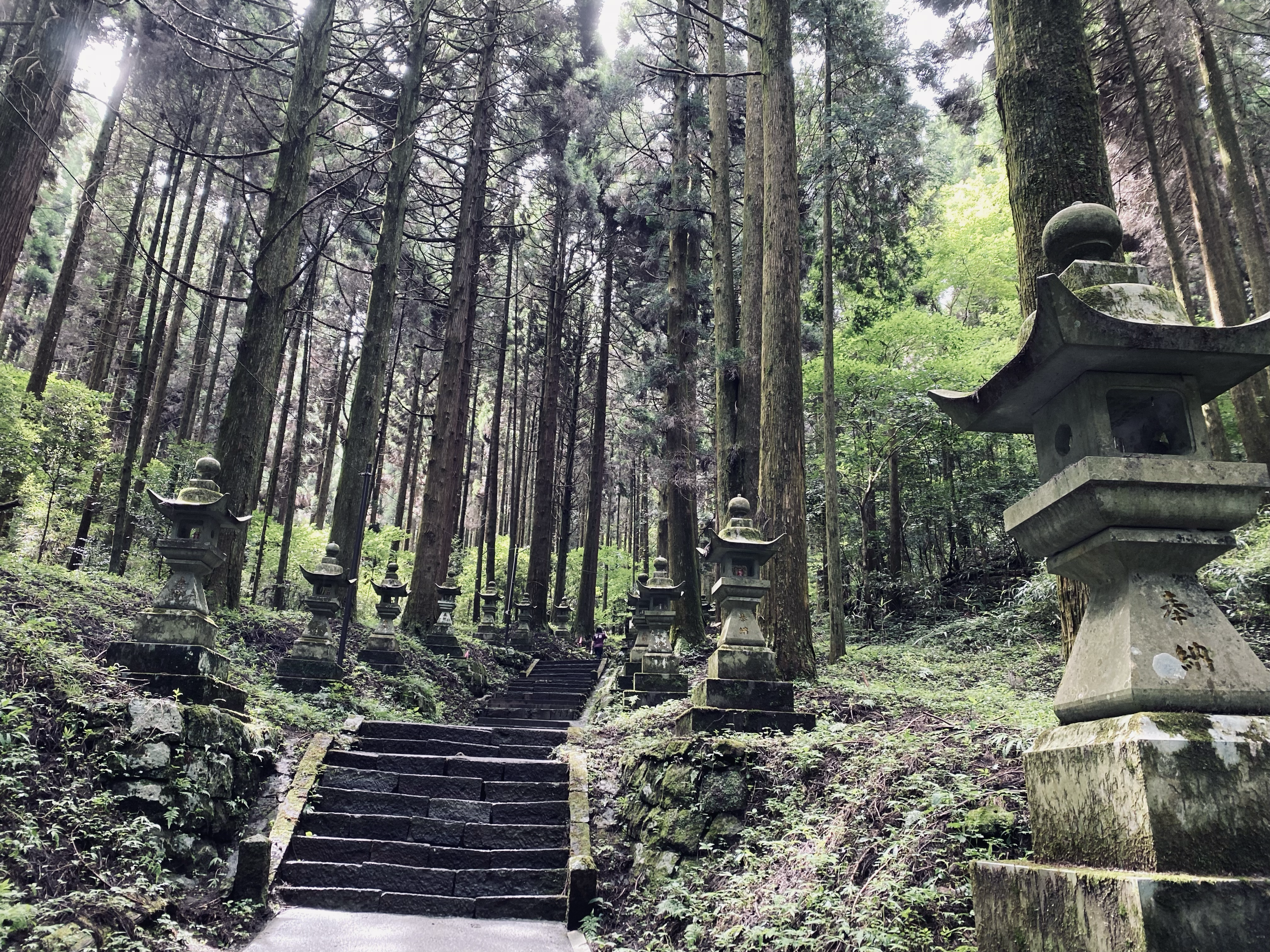
Minze:
It felt a lot like a very steep version of Alishan in Taiwan, with temperate forests all around. The stone staircase, which felt like it was 4-5 stories high. And the stairs were inclined forward, so you couldn’t rush up or down the steps too quickly, or you might miss a step (as I did when running to take photos and catch the bus). The shrine itself is incredibly charming and beautiful, and you can ring the bells—though for some reason, the bell on the right didn’t ring when I tried it. As you walk up from the foot of the mountain, you’ll encounter three pairs of stone lions along the way. The carvings are slightly different from the stone lions in Taiwan, making its appearance even cuter. Unfortunately, due to limited time, I didn’t get to visit the Ugetoiwa (穿戸岩). Both the Kamisikimi Kumanoimasu Jinja and Ugetoiwa have their own goshuin , but you can only purchase them at the tourist information center in front of Takamori Station. These are also needed to stick by yourself. For Ugetoiwa, there are two types to choose from. The goshuin for Kamisikimi Kumanoimasu Jinja features a special design, and the book for goshuin itself looks really cute. If you’re into collecting goshuin or your current book is nearly full, I recommend buying one here.
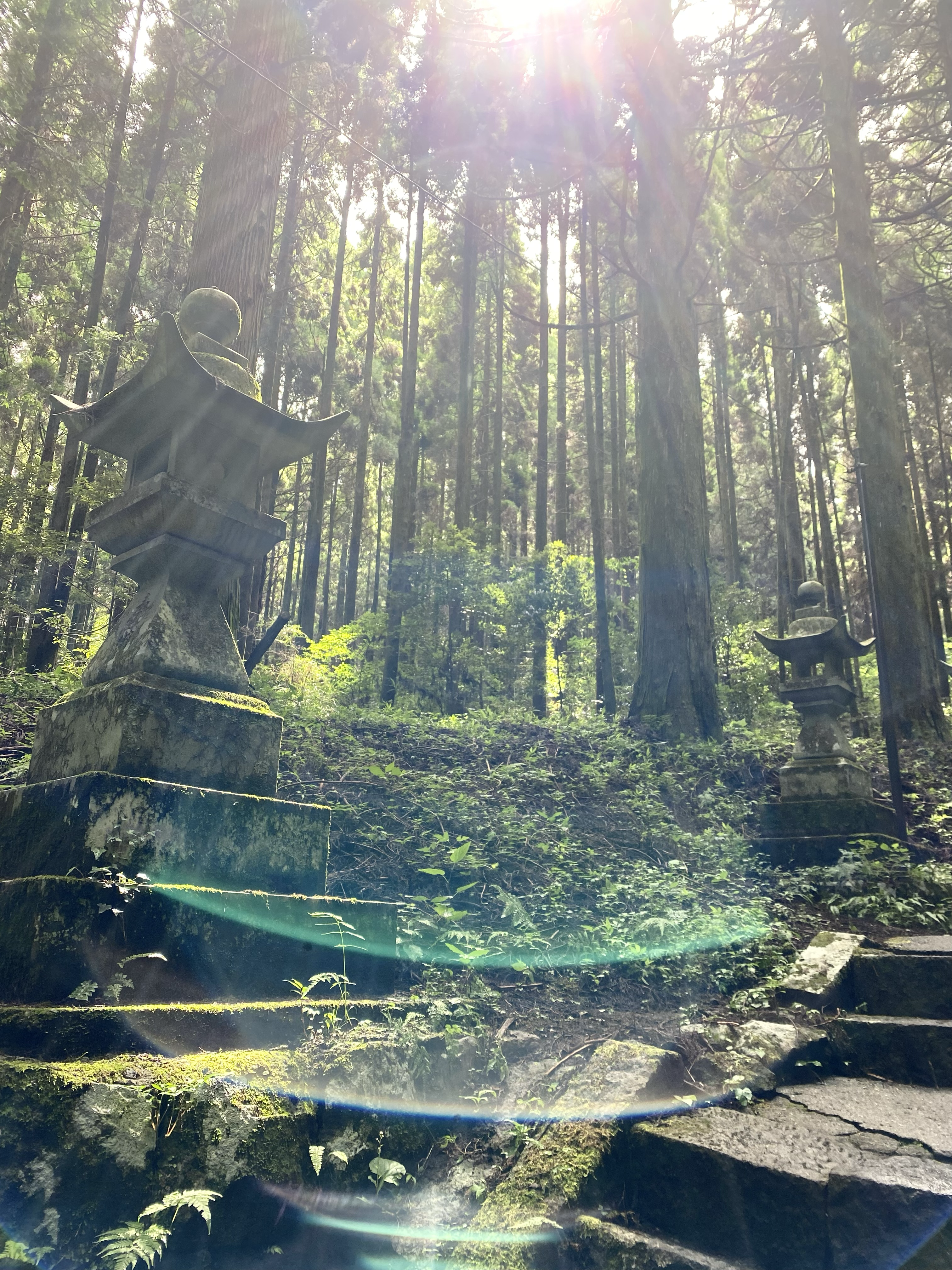
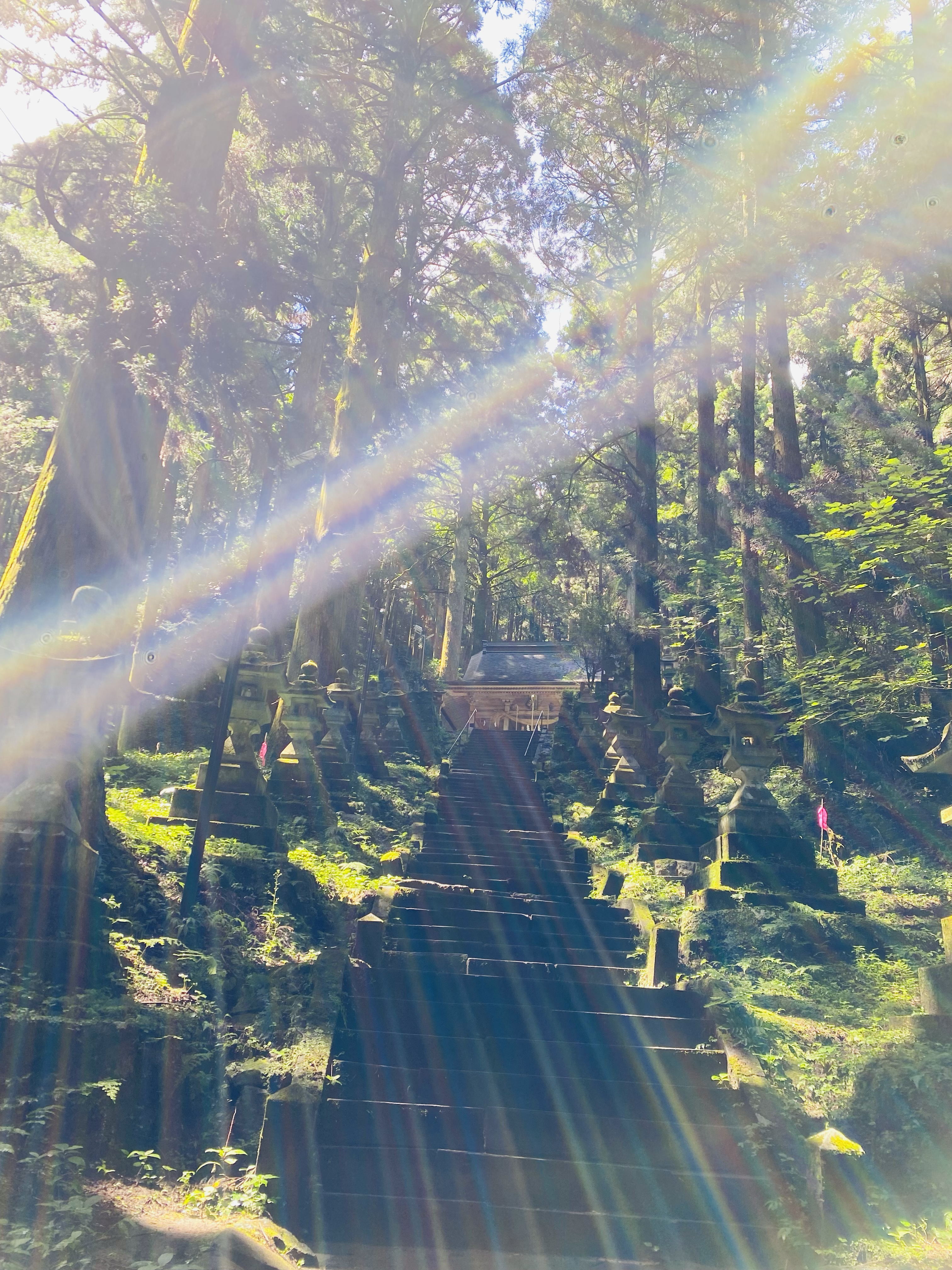
Daikanbo
Totoro:
Daikanbo is the highest peak on the northern outer rim in Aso, offering hikers a commanding view of Aso City and a distant sight of the Five Peaks of Aso. It’s worth noting that these five peaks are known as the “Nehan-zo,” due to their resemblance to a lying Buddha.
We chased the sunset when we went on the mountain, with only a few hours left before the typhoon made landfall. The sky darkened earlier than usual, making the orange-red sunset more striking. Despite the gusts being strong enough to mess up your hair, we saw many couples taking advantage of the remaining daylight to enjoy the romantic ambiance that nature offered.
I’ve heard that in the fall, the area transforms into a sea of golden pampas grass. Although I missed it this year, I’m looking forward to the day when I can witness it with my own eyes!
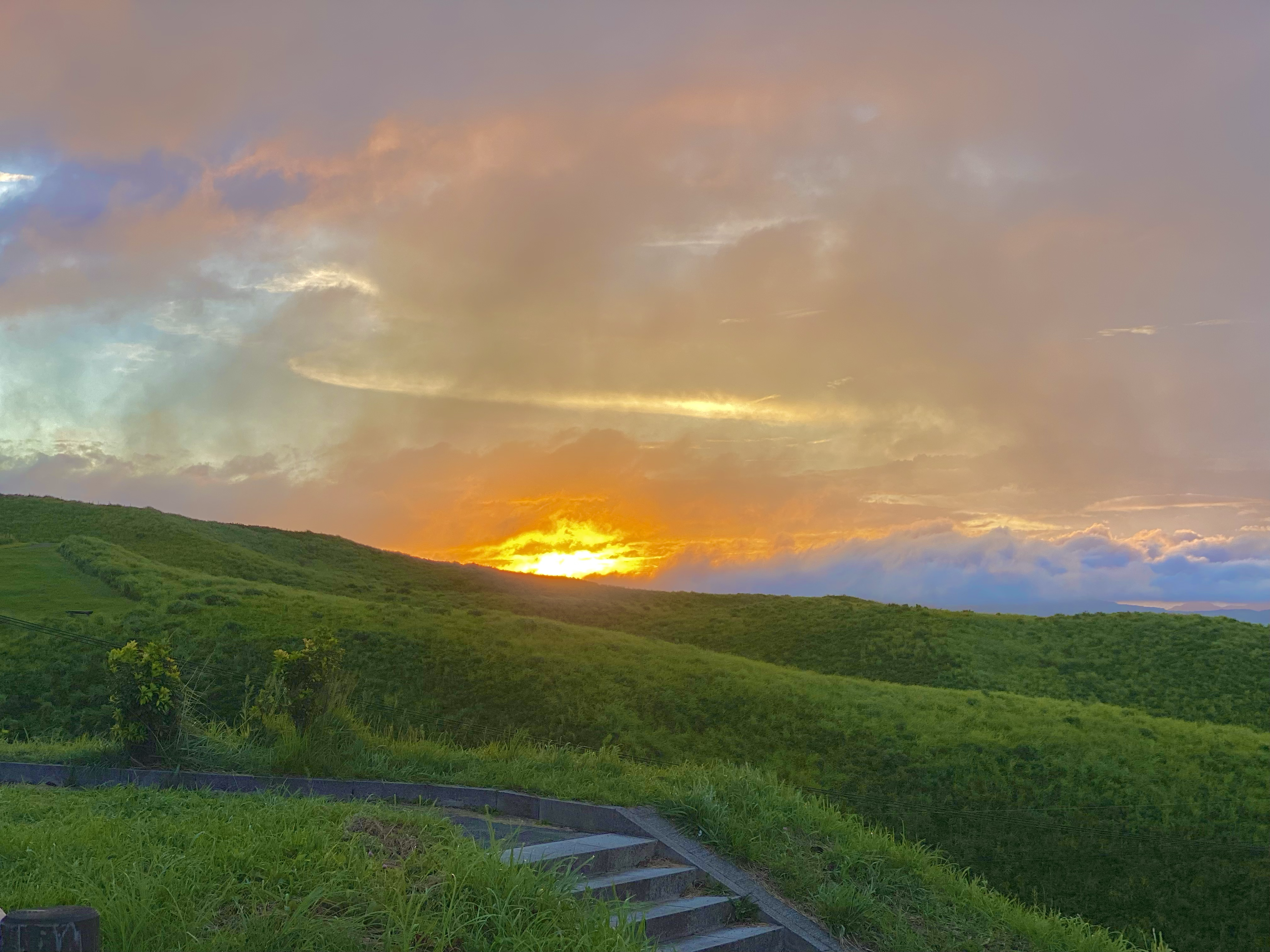
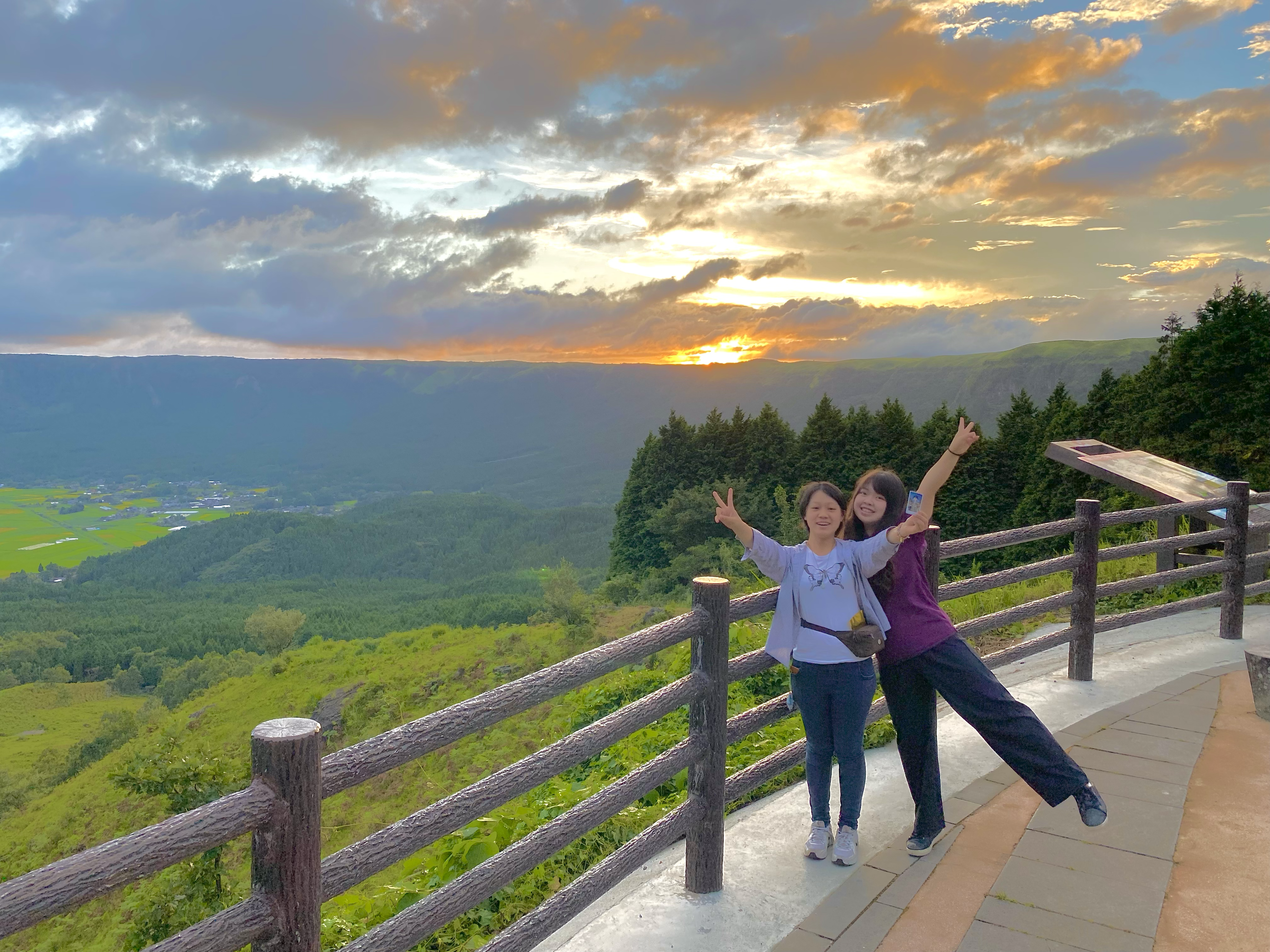
Minze:
The mountains surrounding Mount Aso have a unique situation. For over a thousand years, people in Aso have been managing the plants on the mountains. As a result, all the mountains are covered with grasslands at the summit and forests on the slopes. It’s said that if they don’t maintain it annually, the summit would quickly turn into a forest. Some might wonder, isn’t a forest better? Shouldn’t nature be left to grow freely? Environmentalists might have these questions, but in reality, this management is well-founded. Proper forest management can maintain the health of the forest and increase biodiversity. If dominant species are left to grow unchecked, there’s a high chance they will suppress endangered species, leading to the extinction of some. Standing on the Daikanbo Peak, it appears to be a grassland, yet not a grassland, like a forest, but not a forest, a mountain that seems not to be a mountain. Paired with the sunset that many literary giants have written about, if I could drive, this would surely be my go-to place for clearing my mind when feeling down.
